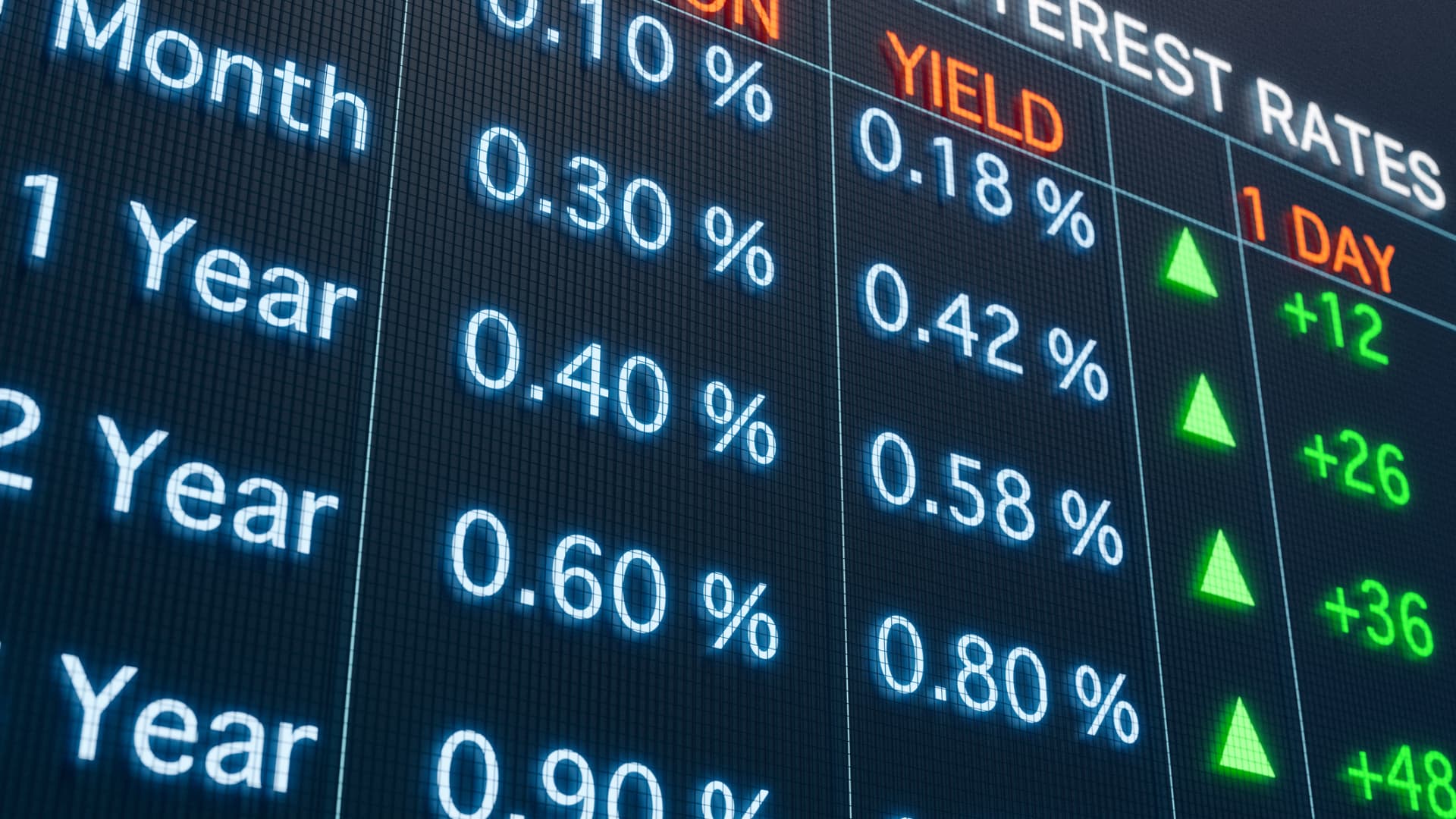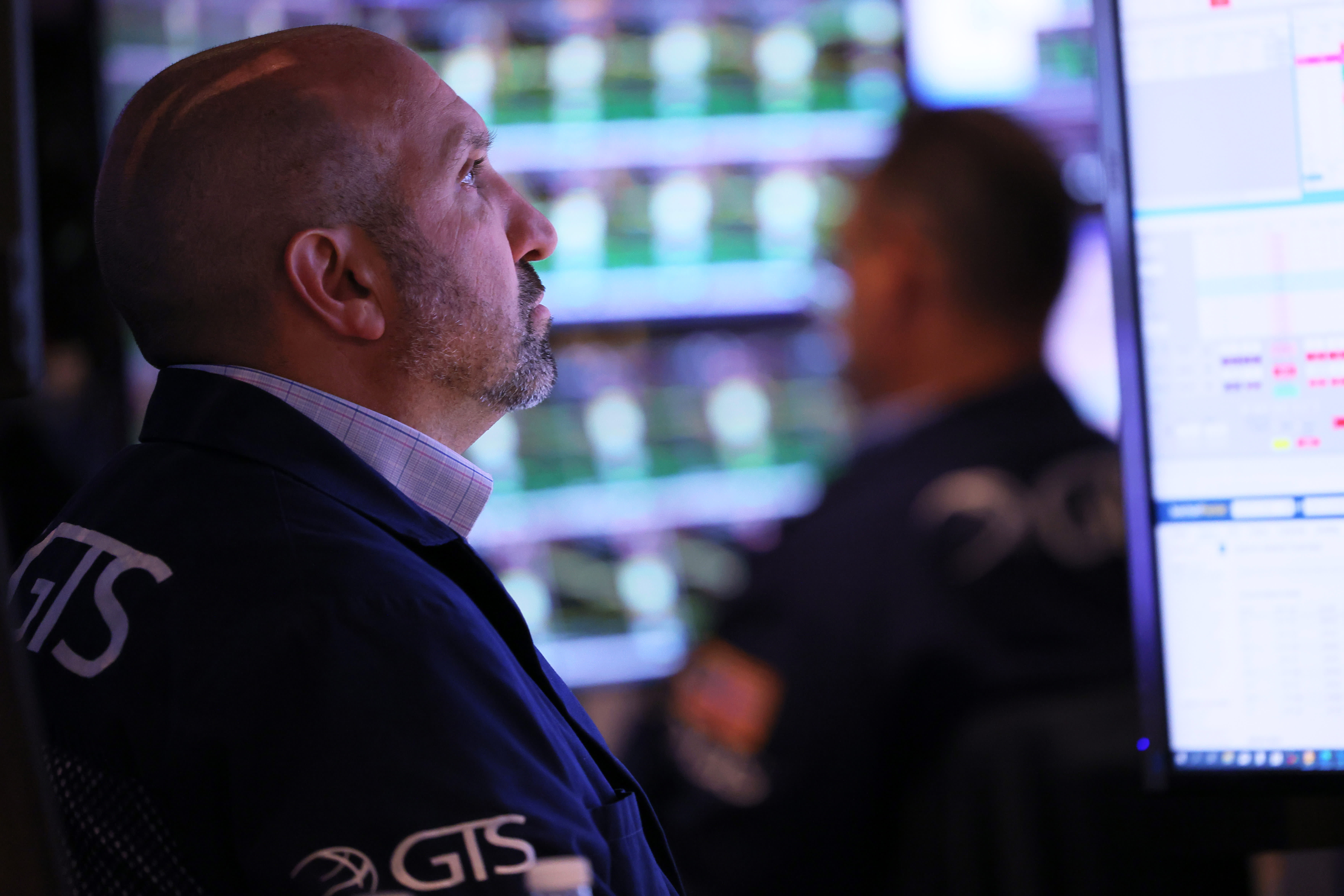Products You May Like
Bond yields jumped this week after another major rate hike from the Federal Reserve, flashing a warning of market distress.
The policy-sensitive 2-year Treasury yield on Friday climbed to 4.266%, notching a 15-year high, and the benchmark 10-year Treasury hit 3.829%, the highest in 11 years.
related investing news
Soaring yields come as the markets weigh the effects of the Fed’s policy decisions, with the Dow Jones Industrial Average dropping nearly 600 points into bear market territory, tumbling to a fresh low for 2022.
The yield curve inversion, occurring when shorter-term government bonds have higher yields than long-term bonds, is one indicator of a possible future recession.
More from Personal Finance:
Inflation and higher rates are a ‘dangerous mix’ for consumers
Getting married? How to know when to combine your finances
New retirees may face surcharges for Medicare premiums
“Higher bond yields are bad news for the stock market and its investors,” said certified financial planner Paul Winter, owner of Five Seasons Financial Planning in Salt Lake City.
Higher bond yields create more competition for funds that may otherwise go into the stock market, Winter said, and with higher Treasury yields used in the calculation to assess stocks, analysts may reduce future expected cash flows.
What’s more, it may be less attractive for companies to issue bonds for stock buybacks, which is a way for profitable companies to return cash to shareholders, Winter said.
Fed hikes ‘somewhat’ contribute to higher bond yields
Market interest rates and bond prices typically move in opposite directions, which means higher rates cause bond values to fall. There’s also an inverse relationship between bond prices and yields, which rise as bond values drop.
Fed rate hikes have somewhat contributed to higher bond yields, Winter said, with the impact varying across the Treasury yield curve.
”The farther you move out on the yield curve and the more you go down in credit quality, the less Fed rate hikes affect interest rates,” he said.
That’s a big reason for the inverted yield curve this year, with 2-year yields rising more dramatically than 10-year or 30-year yields, he said.
Review stock and bond allocations
It’s a good time to revisit your portfolio’s diversification to see if changes are needed, such as realigning assets to match your risk tolerance, said Jon Ulin, a CFP and CEO of Ulin & Co. Wealth Management in Boca Raton, Florida.
On the bond side, advisors watch so-called duration, or measuring bonds’ sensitivity to interest rate changes. Expressed in years, duration factors in the coupon, time to maturity and yield paid through the term.
Above all, investors must remain disciplined and patient, as always, but more specifically if they believe rates will continue to rise.Paul Winterowner of Five Seasons Financial Planning
While clients welcome higher bond yields, Ulin suggests keeping durations short and minimizing exposure to long-term bonds as rates climb.
“Duration risk may take a bite out of your savings over the next year regardless of the sector or credit quality,” he said.
Winter suggests tilting stock allocations toward “value and quality,” typically trading for less than the asset is worth, over growth stocks that may be expected to provide above-average returns. Often, value investors are seeking undervalued companies that are expected to appreciate over time.
“Above all, investors must remain disciplined and patient, as always, but more specifically if they believe rates will continue to rise,” he added.




